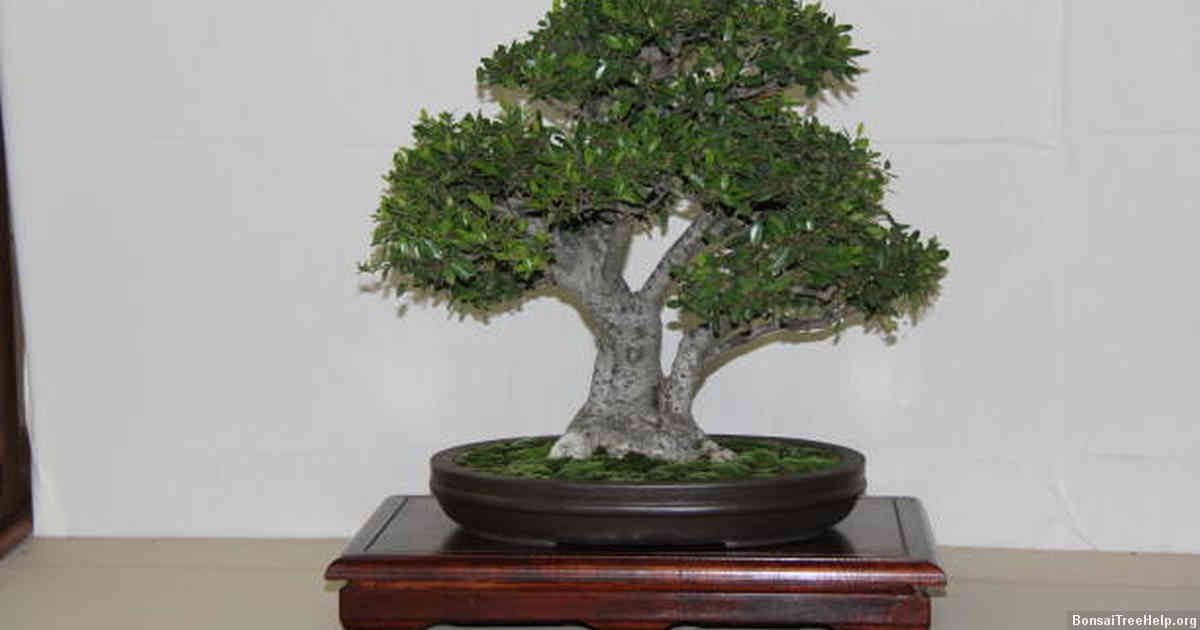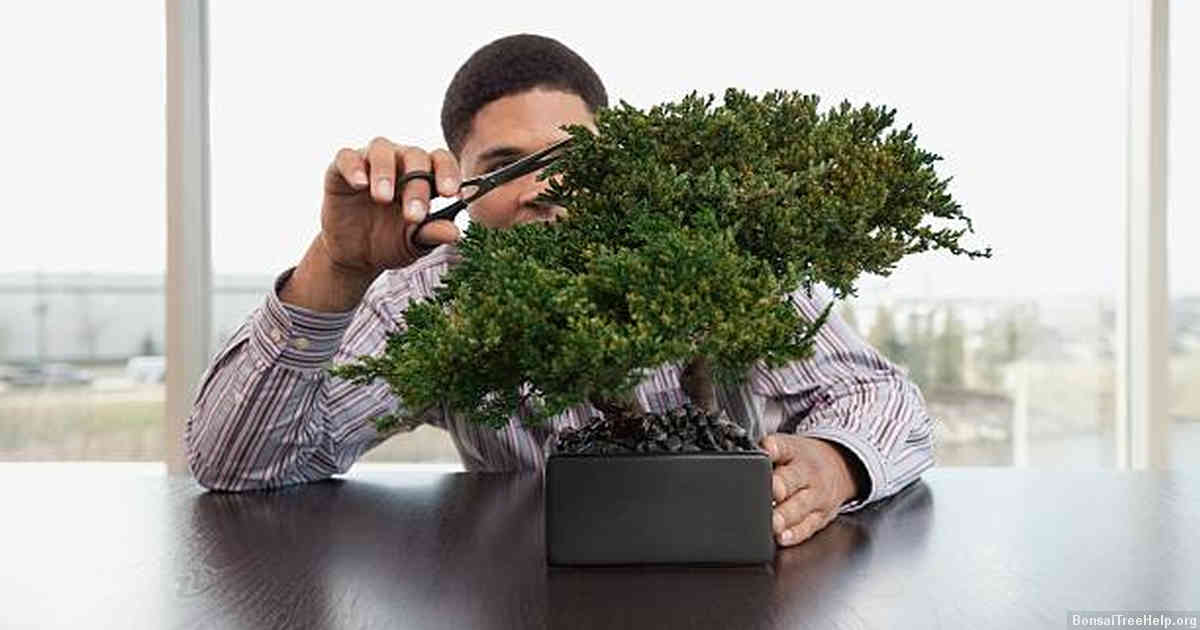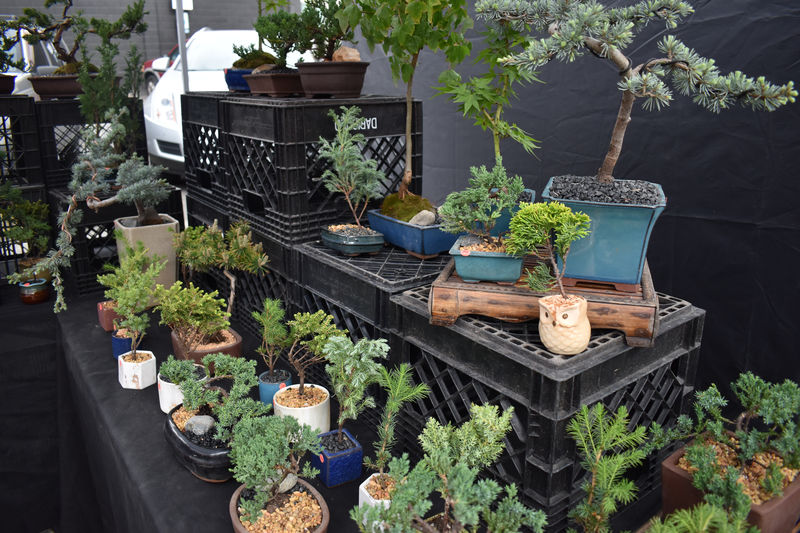
1. To start making a bonsai tree from branches, select the thickest and strongest branch you want to use as the trunk of your bonsai tree. Cut the branch at a slight angle so that rainwater will be able to run off it and not pool around the roots.
2. Secure the branch into your pot using either wire or sturdy string tied in several places to hold it down. Pack soil tightly around it and tamp it down until it is firmly secure in place.
3. Using thinning shears, trim away any leaves, twigs, bark etc. All along the length of the main stem, gradually tapering its size towards its tip and creating an outline for where your future foliage will go when wired onto this structure later on. Make sure you leave enough distance between each cut so that new shoots can form in those spaces later if desired during styling or shaping of your bonsai tree.
Contents:
Branch Selection

When crafting a bonsai tree, selecting the right branch is an important consideration. Choosing branches that are too thick or too thin can hinder the desired design of the tree. To ensure successful growth, inspect each branch and choose ones with healthy foliage and strong, bendable wood. Ensure that no bends are too severe and try to pick those with small knots which will add character to the final product. Look for limbs that have smaller shoots growing from them to maximize future potential and make sure any pruning takes into account this development in order to preserve it when possible.
In addition to size and shape considerations when picking out branches, consider the characteristics of your particular species of tree when creating your bonsai masterpiece. If it has thorns or fruit-bearing capabilities they should not be trimmed off due to their importance in lifecycle cycles of certain plants; however, think carefully about how these components will factor into overall design before committing to any one branch for use in your project. Once you find an appropriate selection it’s time move onto preparing it for planting – but remember not all selections may be compatible with idealizing and honing skills needed for bonsai making so if in doubt seek advice from more experienced gardeners.
Preparation

Before crafting a bonsai tree out of branches, there is some preparatory work that must be done. First and foremost, it’s important to select the right sort of branch for the project. Look for one with a natural curve that fits in with the desired style. It’s also beneficial if the branch comes from an area with good sunlight as this will provide more consistent results once complete. If possible try to find a branch without much sap or bark residue on it – otherwise, these need to be removed prior to commencing the project.
The next stage is ensuring adequate tools are available for shaping and trimming of the trunk and branches during construction. Secateurs are useful for cutting off shoots while pruners can give smaller branches a uniform look when needing to cut away ends that don’t fit with desired design. A chisel or small saw may also prove necessary depending on how complex bonsai design is planned to be. Patience and imagination are essential ingredients when creating artwork such as bonsais from branches – perseverance can help lead projects towards successful completion.
Planting Materials

If you want to make a bonsai tree from branches, you need the right planting materials. This can vary depending on the type of branch used for your bonsai. Generally, however, good soil is essential. Bonsai soils are light and well-draining; they usually consist of organic components such as peat moss, bark chips, and perlite or sand. When it comes to purchasing pre-mixed soils specifically designed for bonsai trees, look for those with an ideal balance between water retention and drainage capabilities.
In order to give your new bonsai tree the best possible start in life, use appropriate root hormones along with specific pruning techniques during transplanting. To help maintain proper moisture levels throughout the season when making a bonsai from branches, using techniques such as humidity trays will be beneficial in providing necessary conditions that mimic those found naturally outdoors by trees grown in their native environment.
Fertilizers can play an important role while caring for your newly created bonsai tree from branches too – whether it is young or fully mature. Fertilizing regularly will provide your plant with essential nutrients required to support healthy growth cycles at each stage of development. A slow-release fertilizer should be chosen in accordance with manufacturer’s instructions as this will ensure careful management that supports long term success when growing a beautiful miniature specimen at home.
Soil Preparation

Creating the perfect bonsai tree from branches begins with soil preparation. As any experienced gardener knows, this involves more than just picking out a bag of potting mix and dumping it in a container – although that is part of the process. It involves selecting an appropriate soil mix for the particular type of bonsai being grown, as well as preparing the mixture so that it drains properly while still providing sufficient nutrients to sustain healthy growth.
For starters, you’ll want to choose an organic or non-organic soil blend specifically designed for bonsai trees. This will help provide essential minerals and microorganisms needed by the tree’s roots. When choosing an organic mixture, look for one that has been sterilized to prevent disease or fungi spores from infecting your plant. Pick one that contains various particle sizes such as sand, perlite and other elements like moss, bark and charcoal which helps maintain structure and good water drainage.
Once you have selected your soil blend you must consider how best to prep it before use. For example, if you’re using a pre-mixed commercial product chances are the particles will be too dense meaning there won’t be enough air around the root system for healthy growth unless it is mixed with lighter materials like bark chips or perlite. If starting from scratch then consider adding composted manure or vermiculite to lighten up heavier soils and coarse sand which will help ensure proper aeration and moisture retention without letting waterlogging occur too easily.
Pruning Techniques

Pruning is an integral part of bonsai care as it helps maintain the shape and design of the tree, encouraging growth in preferred directions. When forming a bonsai from branches, firstly one should determine which parts of the branch will become trunks, branches and roots. The overall styling should be decided on before attempting to prune a bonsai tree, as certain techniques need to be used for each individual trunk and branch. To create depth of field, the different levels need to be set with careful attention paid to proportions among all elements.
For shaping branches and trunks alike, small cuts should be made along where there is existing bud growth or dormant buds can also have their locations marked out prior with chalk or charcoal if needed. Care must always be taken not to remove too much material at any given time so that future adjustments may still take place. Crown thinning using v-cuts allows for more light into various layers within the canopy while creating interesting silhouettes in windy climates.
Deadwood may also require special treatments such as jin or shari when constructing a visually intriguing setting amongst wild nature scenes typical in many bonsais across species. Bleach solutions are ideal for sanitizing wood once protected by waxes while avoiding discoloration caused by excessive use of chemicals on living plant material near or around them.
Bonsai Training

Training a bonsai tree is an art form that takes skill and patience to master. In order to make a bonsai tree from branches, first the branch must be shaped into the desired shape. This process can involve pruning off excess foliage and re-positioning the branches into an aesthetically pleasing silhouette. Once this has been achieved, the trunk of the tree should be trained by wiring it into its desired shape with copper or aluminum wires. As the wires press onto the bark, they gradually hold their shape until branches become moulded by them over time. If properly secured in place, wires can remain on for months without hindering natural growth or damaging limbs.
In addition to wiring training methods, advanced techniques such as grafting, root pruning and defoliation may be used for shaping your bonsai tree. Grafting is typically used to add decorative foliage or change leaf shapes when repotting plants during each growing season. Root pruning involves cutting away at existing roots in order to reduce overall size while encouraging new ones to grow from cut points which will further give stability over time. Defoliation simply means removing leaves and petioles in order to stimulate buds on remaining nodes which encourages strong branching growth as well as helps light reach inner sections of crowns easily due create increased circulation between leaves and stems above them too.
Maintenance and Care

Maintaining a bonsai tree requires patience, dedication and constant attention. To keep your bonsai looking healthy and thriving, it’s essential that you water the plant regularly. This can range from once a day to several times per week depending on the size of the tree, but it should never be allowed to dry out completely. Using rainwater or distilled water is recommended when possible, as this will help protect against any mineral build-up in the soil or potting medium over time.
Apart from watering your bonsai tree properly, regular pruning is another important task for proper maintenance. Cutting back branches and leaves helps maintain a desired shape while also preventing any new growth that could be too big for its environment. Pruning can also stimulate new buds which lead to thicker trunks and more foliage for an interesting overall look. Fertilizer can help give your bonsai additional nutrients during certain periods of the year, although using natural fertilizer such as compost or worm castings is usually preferable to chemical fertilizers whenever possible.
Re-potting your bonsai every two years or so is vital for optimal health and longevity. Repotting allows you to replace old potting soil with fresh soil combined with high quality organic matter; this helps ensure there are adequate drainage and aeration within the root system at all times – both of which are key components in maintaining vigorous health in plants like bonsais.
Leave a Reply